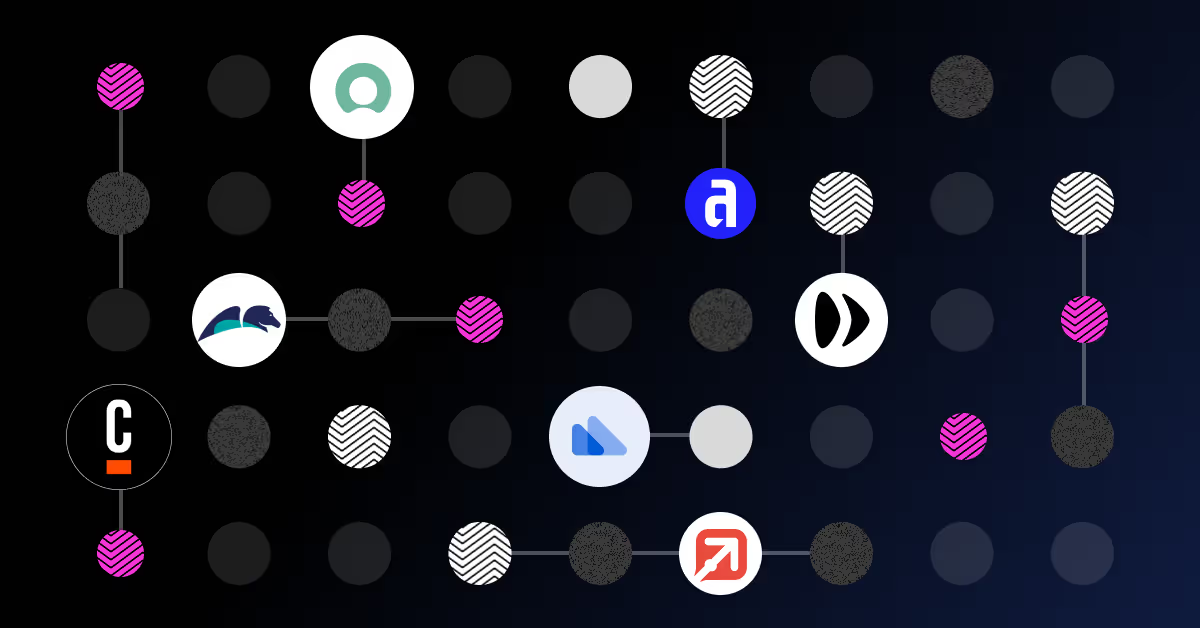What is digital transformation?

Since the pandemic, businesses have been adapting to a hybrid working world and making digitisation an urgent priority. From work systems or sales and operations routines to online meeting software, there is a clear need to consolidate tasks and make everything as digitally functional as it can be in order to maximise productivity and functionality - adapting to the ‘new normal’ and ensuring that your teams are as flexible in their ability to work and produce outcomes as possible.
At the same time, technological advances in AI and intelligent automation are paving the way for huge shifts in not only where we work, but how we work and the kind of work we are able to do. Today’s IT leaders have the huge task of delivering this digital transformation, while ensuring they get a strong commitment to change from the wider company culture, carrying over legacy systems and work with minimal disruption to business as usual. No big deal, right?
Let’s start by looking at what digital transformation actually means when it comes to business.
What is digital transformation?
Digital transformation is the strategic adoption of digital technologies, used to improve processes and productivity, deliver better customer and employee experiences, manage business risk, and control costs. Digital transformation can include a wide range of tools, solutions, and processes in order to deliver improvements - and is unique to each business or organisation based on their existing technologies and objectives. For many, digital transformation is a wide-ranging move away from individual, siloed processes or environments towards an integrated solution.
To remain competitive in the modern business landscape, digital transformation is a necessity - without a plan to strategically adopt beneficial technologies, it can be easy to be outpaced by competitors who are able to use their technology to deliver more efficiently and effectively at greater degrees of scale. Digital transformation strategies often involve process orchestration and automation; an organisation’s ability to deliver great employee and customer experiences hinges on its ability to seamlessly operate on the backend.
Many businesses will also look towards product digitization as part of their digital transformation, using technology to enhance a product or service, like smart-connected or voice-activated devices. Digital transformation not only helps companies stay on the cutting edge of technology, but also creates the agile infrastructure necessary to constantly innovate and adapt to rapid change and consumer demands.
Read more: What are the 4 main types of digital transformation?
What is the link between digital transformation and customer experience?
As more companies undergo digital transformation, customer experience becomes an essential tool for differentiating between services or products, and is itself a considerable driver of innovation and competition. Customers expect a consistent, seamless experience across all channels, devices, and interactions - making a long term digital transformation strategy essential.
Customer experience as a driver of digital transformation involves a clear and up-to-date understanding of your customers that can answer key questions such as; What are they looking for in a digital customer experience? What are their pain points? What expectations towards a digital experience do they have? Data and analytics are essential to answering these questions, as well as a robust system for implementing change and a holistic interpretation of results - even digitally, no interaction occurs in a vacuum, and a true digital transformation must touch on all aspects of a digital journey. Digital transformation is an ongoing process, so keep learning and evolving as your customers’ needs change.
The key to achieving successful digital transformation is to keep the customer at the centre of your digital strategy. This means understanding their needs and preferences and using data to deliver personalised experiences that meet their expectations. It also requires brands to commit to continuous learning and improvement, as what works today may not work tomorrow.

What are the challenges involved in digital transformation?
Digital transformation can come up against a number of different challenges and blockages, often depending on the scope of the transformation and the technology required. However, there are four common problems that businesses should plan for when developing their transformation strategy:
1. Costs
Digital transformation can commonly involve a lot of necessary time, from developer work to training staff to utilise new systems and ways of working, as well as new technology solutions. This can mean the need for a large budget for many businesses to successfully complete their transformation.
2. Legacy systems
Digital transformations mean change for a businesses systems and practices, and the storage of legacy data or merging of legacy systems with the new can present a significant quandary for digital strategy planning, as well as a challenge for developers looking to integrate new technology within the ecosystem.
3. Fear of change
Key to a successful digital transformation is ensuring that your staff can adapt to new systems and ways of working quickly and easily. Fear of change, and a desire to avoid new technology in favour of what is already familiar can be a significant roadblock.
4. Bureaucracy
Senior leaders in large organisations often want different things, or are at different stages of digital transformation, leading to long decision timelines - as well as indecision and a more complex roll-out of the businesses digital transformation strategy, increasing the time (and cost).

How can businesses accelerate their digital transformation journey?
Time is a key challenge to digital transformation, affecting costs as well as customer and business relevance. However, there are a number of ways in which businesses can accelerate their digital transformation journey in order to mitigate some of the challenges mentioned above.
● Automate repetitive tasks – accelerate automation by using analytics to help you decide what you should automate next, how much you’ll save by doing so, and the technology you need to deploy.
● Deliver work on time - An end-to-end operations system can help you track, manage, audit and action all inbound requests, enabling you to become more efficient and meet service level agreements.
● Citizen development – The rise of no-code solutions mean that anyone in the business can be trained to use drag-and-drop workflows rather than relying on expensive development work everytime you want to make an operational change.
Enate can help you to accelerate your digital transformation goals. Our operational workflow software wraps around your current tech stack and legacy systems and everyone in the business can be trained to use it. Organise operations, assign the right work to the right person or bot, identify automation opportunities and get the job done on time.




